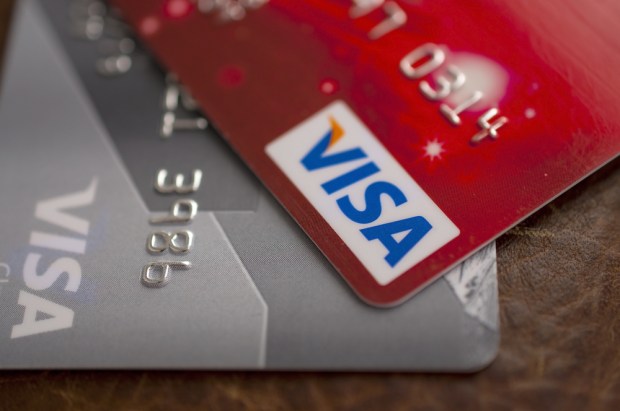With Cross-Border Volumes Up 11 Pct, Visa Tops FY 2Q Views

Visa logged double digit growth over several key areas, from overall transactions processed to cross-border volumes. Results topped estimates, and as management noted, debit remains strong — and so does credit. Europe remains on track…and get ready for the uncluttered eCommerce experience via the recently debuted Digital Commerce initiative.
Spending via cards – debit and credit – inside and outside the United States buoyed Visa Inc. results beyond the Street for the fiscal second quarter that ended in March.
Double-digit gains marked spending across border corridors and across card types – and management, perhaps unsurprisingly, pointed to strength in consumer spending, especially in the United States.
Against that broadly painted backdrop, and in terms of headline numbers, Visa reported net income of $1.11 a share, better than the $1.02 the Street had seen. The top line was $5.1 billion, better than estimates of $4.8 billion.
Drilling down a bit, cross-border volumes were 11 percent higher than a year ago. Processed transactions gained 12 percent over the same period, to the tune of $29 billion. Payments volume, as noted in supplemental earnings materials, came in at $1.9 trillion, up 12 percent year-on-year.
Within the payments volume figure, and broken down still further, credit was up 12 percent to $1.1 trillion. Debit grew faster than credit, up 16 percent. CFO Vasant Prabhu said on the earnings conference call with analysts that all facets of debit spending “looked very good” in the period, with a resilient consumer showing sustained propensity to spend.
Also during the conference call, CEO Alfred Kelly said that payments growth, measured on a cross-border basis, was up in all regions in and out of Europe. Inbound volumes to the United States also gained, notably in double digits, for the first time in four years. That’s partly a function of a relatively weaker dollar compared to the pound and the Euro.
Kelly also told analysts that card-not-present transactions gained some ground quarter over quarter (sequentially) by two percentage points, and outpaced “face to face” spending growth. He also said that just month ago, one in eight transactions globally were done via contactless methods; that tally is now one in five globally.
Total cards stood at 3.3 billion, up 4 percent. Credit cards were up 2 percent to slightly over 1 billion cards, while debit cards far outpaced that growth, at 5 percent through the same period to 2.2 billion.
The company also said that client incentives were 20.3 percent of gross revenues, up from 18.7 percent.
The increased spending and sanguine economic environment helped spur Visa to boost its annual net revenue outlook for the year to low double digits. Previous estimates had been in the high single-digit percentage gains.
CEO Kelly called out a number of initiatives and regional standouts to analysts, stating that payments growth ranged from between 9 to 17 percent growth as measured across each of the company’s six reported regions, “which is an indication of the broad-based global strength we are seeing.”
Japan and India remain attractive markets. Activities are still ongoing to gather further entrée into China.
He also said that integration of Visa Europe remains on track. Settlement migration was completed successfully across the months of February and March, with what he said were no major issues. As many as 500 clients were migrated, he said.
“Authorization migrations begin later this month,” he told analysts. Technical migration in its totality should be completed by the end of the calendar year.
Kelly also discussed digital initiatives, including the introduction last week of the Visa Digital Commerce program – providing consumers with a simpler, more secure experience with less friction to utilize cards for digital payments.
“We aim to declutter the checkout page,” he said, “and streamline the checkout process.”
In another nod to digital business, Kelly said discussions are underway to collaborate with PayPal on a number of token initiatives.
“Visa Direct continues to gain traction in markets, globally,” Kelly continued. “We are beginning to see the network effect taking hold as scaled originators, such as acquirers and technology platforms, continue to use Visa’s capabilities to push funds in real time over our network.” P2P is growing in markets globally, he stated.
Bill payments by consumers, he said later in the call, with funds pushed from debit cards, have seen growth, too.
B2B efforts show progress as well, Kelly noted – in the wake of the Fraedom buy in March of this year, issuers are showing increased interest in the firm’s B2B offerings.
